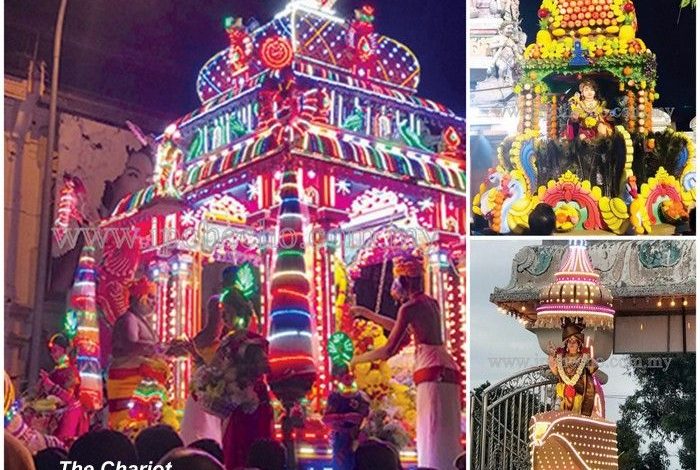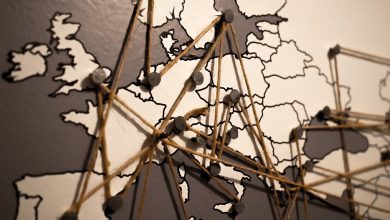Cover Story: A Religious Festival, Not a Celebration


By Joelyn Jonathan
The haunting chords of Indian traditional music, emanating from Hindu temples as well as street processions announces the festival of Thaipusam. Thousands of devotees will have gathered once again to celebrate this annual event. As tourists line the streets, devotees throng the temples and the public’s perception of Thaipusam is traffic jams, people (hordes of them) and music. Is that what Thaipusam is all about? Ipoh Echo acquired some remarkable insights into this annual celebration this year.




It’s More than Just Colours; It’s a Celebration Dedicated to Lord Murugan
Thaipusam, derived from the word ‘Thai’ which means the 10th month of the Tamil calendar and ‘Pusam’, the star at its highest point, is a celebration dedicated to Lord Murugan.
The ‘Thai’ month usually falls during the full moon (between January and February). As of this year, it was on Monday, January 21. Thaipusam is celebrated in countries with large Hindu populations such as Sri Lanka, India and Malaysia.
In Malaysia, this festival is observed in three states namely, Kuala Lumpur, Perak and Penang.




Thaipusam in Perak
Focusing on Perak, this festival is celebrated at two major venues. In Ipoh it is at the Maha Mariamman Temple, Jalan Sungai Pari also known as the ‘Mother’ temple and Kallumalai Murugan Temple, Gunung Cheroh, the ‘Son’ temple. The distance between these two temples is approximately 7km. Thaipusam is considered the biggest festival within the Hindu community.
A Mythic Tale
The mythic tale of Thaipusam began when Lord Murugan had a misunderstanding with his parents after they gave the fruit of knowledge to Lord Ganesha (Lord Murugan’s brother). Lord Murugan went up a hill and refused to see anybody. Idumban, a cowherd and a faithful devotee of Lord Murugan wanted to pacify him. However, Lord Murugan created obstacles to prevent Idumban from reaching him. Idumban, carrying milk pots, determined to meet Lord Murugan, finally reached the hill top and poured the milk on Lord Murugan to calm him. Lord Murugan told Idumban to bring all those who suffer to him and he would grant their wishes. Ever since then, devotees come to regard Thaipusam as a day to make vows with Lord Murugan.
The Chariot
The three-day affair begins on the eve of Thaipusam. The chariot procession takes place on the eve. The ‘Ratham’ is a chariot decorated with LED lights with a statue of Goddess Parvati (Lord Murugan’s Mother) in the middle. The chariot moves from the Maha Mariamman Temple at 4pm. It takes approximately four hours to complete the journey. Upon reaching the Kallumalai Murugan Temple at about 8pm, devotees begin to pour the milk on Lord Murugan. Hence, the arrival of the chariot marks the beginning of Thaipusam.
On the second day of Thaipusam, the chariot returns to the Maha Mariamman Temple. This time with only two statues – Goddess Parvati and Lord Murugan. According to Hindu belief, it is said that the day after Thaipusam marks the day where Goddess Parvati takes Lord Murugan home after their misunderstanding.
Along the way back to the Maha Mariamman Temple, a few prayers will be conducted by the high priest. During the prayers, devotees may give offerings in the form of ‘Archanai’ (gifts for the God). Besides that, devotees also break coconuts. This act takes place when a devotee’s vow has been fulfilled by God.
The ‘Ratham’ is known as a sacred chariot. As the ‘Ratham’ passes by the stalls that provide free food for devotees during Thaipusam, prayers will be held in front of the stalls as a form of offering. The ‘Ratham’ reaches the Maha Mariamman Temple around 4am the following day thus completing the journey. The arrival of the chariot at the temple signifies the conclusion of Thaipusam.


Thaipusam Offerings and the Kavadi
Throughout the duration of the celebration, devotees give Lord Murugan various offerings of thanks. Some provide fruits and flowers and some milk called the ‘Paal Kudam’, but the most likeable offering is the ‘kavadi’.


Over the years, the kavadi has evolved into various shapes and sizes. According to Vikneswaran Sivanadian, 54, in the early years, kavadis were made using plywood before his father M. Radhakrishnan and his uncle, the late M.S. Lingam, created the first Styrofoam kavadi in Malaysia.
M. Radhakrishnan and M.S. Lingam have been involved in making kavadis at their residence in Buntong for over 50 years. What was then started by them is now being continued by their children who have established their own group consisting of their family members. The kavadis they make are only for their family members and close friends, hence they are free.
Local materials are used to make the kavadi except for the peacock feathers. It is hard to find good peacock feathers in Malaysia. Therefore, the items are imported from India.
In 1968, Radhakrishnan designed a kavadi with lights surrounding the frame. The lights were powered using car batteries. “During the riots on May 13, 1969, the kavadis made by Radhakrishnan and M.S. Lingam were placed on a lorry and taken as a chariot when the government declared the official curfew,” said Kanapathy Rasiah (Doc), 68, who is also the crew’s technician.
Kanapathy carried his first kavadi at the age of 12. According to him, the kavadi takes about a month or two to complete while assembling the kavadi might take two days. The shape and size of a kavadi depends on the demands of devotees.
“The artwork and peacock feathers is what makes a kavadi special,” said Sivanesan M.S. Lingam, 60. Sivanesan carried his first kavadi in 1972 when he was 13 years old. The only problem every devotee faces during Thaipusam is the weather, especially in the evening.
Body Piercing


Besides the kavadi, body piercing is another act of penance during Thaipusam. Devotees normally pierce on their tongue, forehead and cheeks. According to Sivanesan one can carry a kavadi without piercing the body. During the early years, the ‘thool’ kavadis were carried. These kavadis did not require piercings.
Most kavadis are made with a ‘gopuram’ (feet of divinity) on top. It is said that each deity comes with a different ‘gopuram’. In a way, the ‘gopuram’ resembles the deity’s temple and hence the kavadis are made based on the temple’s structures.
Pre-Thaipusam Rituals
In order to carry a kavadi, it is imperative to observe some of the pre-Thaipusam rituals. Most devotees stick to a vegetarian diet and fast for 48 days. A kavadi carrier, on the other hand, has not only to fast and observe a vegetarian diet but to abstain from sex for 48 days.
“I have my dinner after my 5pm prayers,” said Venothan Vimalanathan, 46, who carried his third kavadi this year. Venothan only had fruits for his meals. His kavadi weighed 40kg and was called the ‘Paatra’ kavadi. The assembling of his kavadi took place at the Maha Mariamman Temple.


According to devotees, a person will only be able to withstand such weight during Thaipusam. To endure the pain during the piercing, a person should be prepared mentally and physically. “It’s difficult to explain the state of mind a kavadi carrier undergoes during his journey,” said Vikneswaran.
To reach that state of mind, devotees have to observe the practices closely. It is important to exercise and prepare the body for the journey. He only felt a little pain due to tiredness after the journey was over. Upon removing the skewers, not a drop of blood was shed from his body.
Before starting his journey from Maha Mariamman Temple, Venothan performed his prayers at the temple’s main deity area. Family members helped him prepare. During the prayers, Venothan went into a trance before the ‘vel’ skewers were pierced through his cheeks and forehead. The kavadi was placed on him and little hooks were pierced on his body.


The fitting of the kavadi body takes place before the entire structure is placed on the devotee. This is to stabilise the kavadi before devotees begin their seven-km journey. With the sounds of the ‘urumi melam’ (Indian traditional musical instrument) in the background, Venothan went into a trance thus enabling him to withstand the pain.
The kavadi carried by Venothan was built by his group members. It had a ‘gopuram’ on top accentuated by a statue of Lord Murugan below. There were no specific reasons why his kavadi was built in such a way. “The importance of Thaipusam is not how the kavadi looks but the vows you make,” said Sivanesan, reinforcing Venothan’s statement.
It is important to understand what Thaipusam is all about. It is not a festival of kavadi and chariots only. It is a religious festival and not a celebration. The festival focuses solely on Lord Murugan.
“Don’t insult the religion by carrying out the wrong practices during Thaipusam,” said a group member.
Hinduism is a way of life. The younger generation should be educated with the basics of Thaipusam. “Understand the essence of Thaipusam, carry milk for Murugan, focus on your vows and fulfil them,” he added.


